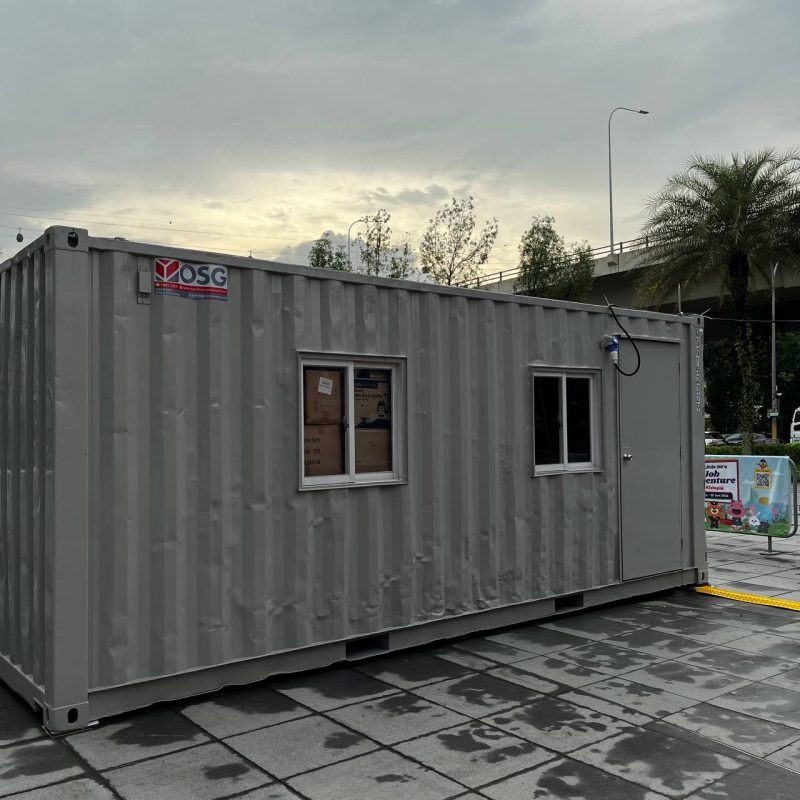The Hidden Costs of Prefab Offices: What to Consider Before You Buy

Prefab offices have become an increasingly popular solution for businesses looking for quick and cost-effective ways to expand their workspace. These modular structures offer flexibility, speed of construction, and often, a lower price tag than traditional buildings. However, while the initial cost savings can be attractive, there are hidden costs and considerations that buyers need to be aware of before making a purchase. This article will explore these hidden costs and provide insight into what you should consider before investing in a prefab office.
1. Transportation and Delivery Costs
One of the first hidden costs to consider is the transportation and delivery of the prefab office. While the base price of a prefab office might seem affordable, getting the structure from the factory to your site can be expensive. The cost will depend on the distance, the size of the office, and the complexity of the delivery. Additionally, special permits may be required for oversized loads, adding to the overall expense.
2. Site Preparation
Before your prefab office can be installed, the site must be properly prepared. This involves leveling the ground, laying a foundation, and ensuring that the site is accessible for delivery trucks and cranes. Depending on the location and the condition of the land, site preparation can be a significant expense. If the site requires extensive grading, drainage, or other modifications, these costs can quickly add up.
3. Utility Connections
Connecting utilities such as electricity, water, and sewage to a prefab office can be more complicated and costly than anticipated. Unlike traditional buildings, which are often constructed with utility connections in mind, prefab offices may require additional work to connect to existing infrastructure. This can involve digging trenches, running new utility lines, and installing additional equipment, all of which come with associated costs.
4. Customization and Upgrades
Prefab offices are often sold as basic models with minimal features. While this can keep the initial cost low, it also means that any customization or upgrades will come at an additional expense. Whether it’s upgrading insulation, installing air conditioning, adding windows, or choosing higher-quality finishes, these extras can significantly increase the final price of your prefab office. Buyers should carefully consider their needs and budget for these customizations upfront.
5. Regulatory Compliance
Different regions have different building codes and regulations that prefab offices must comply with. Ensuring that your prefab office meets these requirements can incur additional costs, especially if modifications are needed to bring the structure up to code. For example, you may need to upgrade fire safety systems, strengthen the structure for seismic activity, or install accessibility features. Failing to comply with local regulations can result in fines or the need for costly retrofitting.
6. Long-Term Maintenance
While prefab offices are often marketed as low-maintenance solutions, they are not entirely maintenance-free. Over time, the materials used in prefab construction may require repairs or replacements. For example, cheaper materials may degrade faster, leading to higher maintenance costs in the long run. Additionally, because prefab offices are often built off-site, finding contractors who are familiar with the specific construction methods and materials can be challenging and expensive.
7. Resale Value and Depreciation
Unlike traditional buildings, prefab offices may not hold their value as well over time. This is partly due to the perception that prefab structures are less durable or desirable than traditional buildings. As a result, the resale value of a prefab office may be lower, and the structure may depreciate more quickly. If you plan to sell the property in the future, this could be a significant financial consideration.
8. Environmental Impact
While prefab offices are often touted as being more environmentally friendly than traditional construction methods, there are still environmental costs to consider. The production, transportation, and installation of prefab offices can generate a significant carbon footprint. Additionally, if the materials used in the construction are not sustainably sourced or recyclable, the long-term environmental impact may be greater than anticipated. Buyers should consider the environmental implications of their purchase and weigh them against potential savings.
Conclusion
Prefab offices offer a range of benefits, including cost savings, flexibility, and quick installation. However, these advantages can be offset by hidden costs that may not be immediately apparent. By carefully considering transportation, site preparation, utility connections, customization, regulatory compliance, long-term maintenance, resale value, and environmental impact, buyers can make a more informed decision and avoid unexpected expenses. Investing in a prefab office is a significant decision, and understanding the full scope of potential costs is crucial to ensuring that it’s the right choice for your business.

